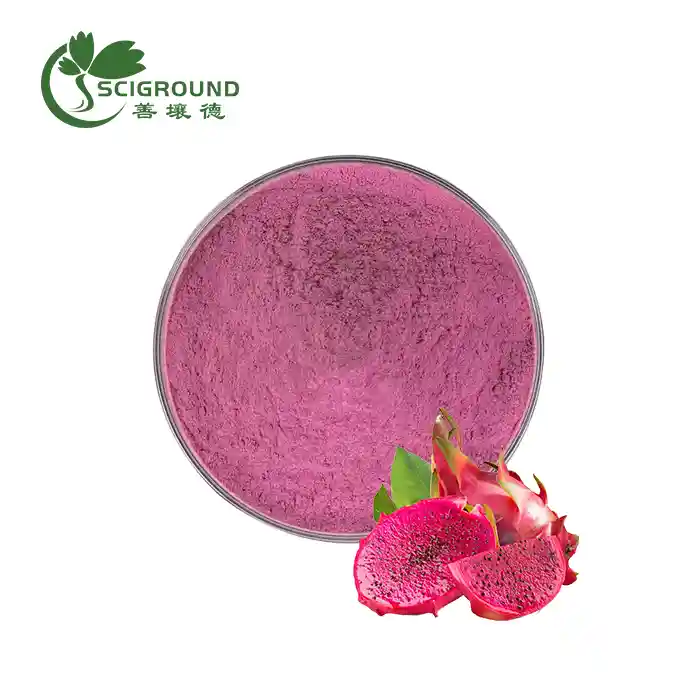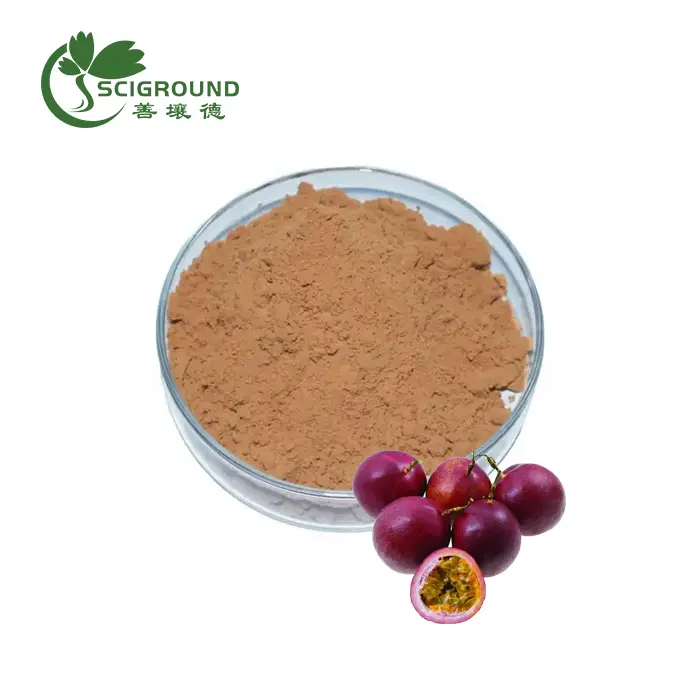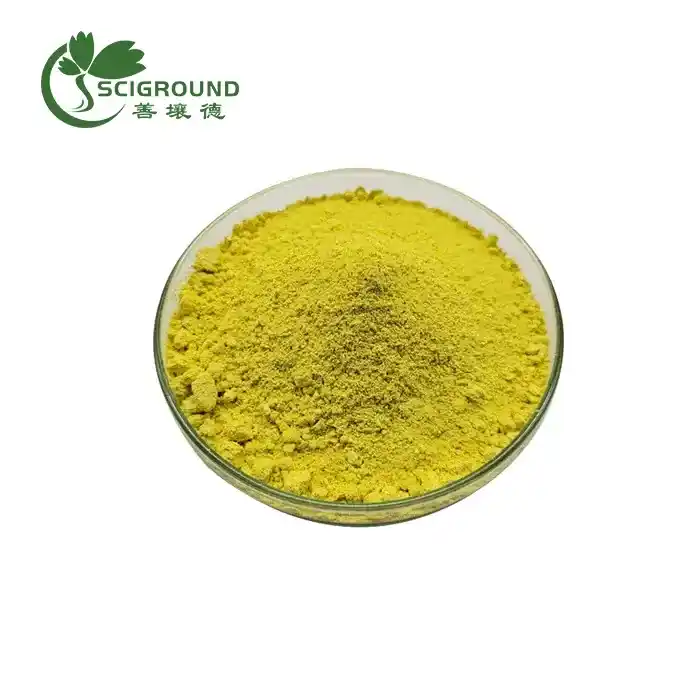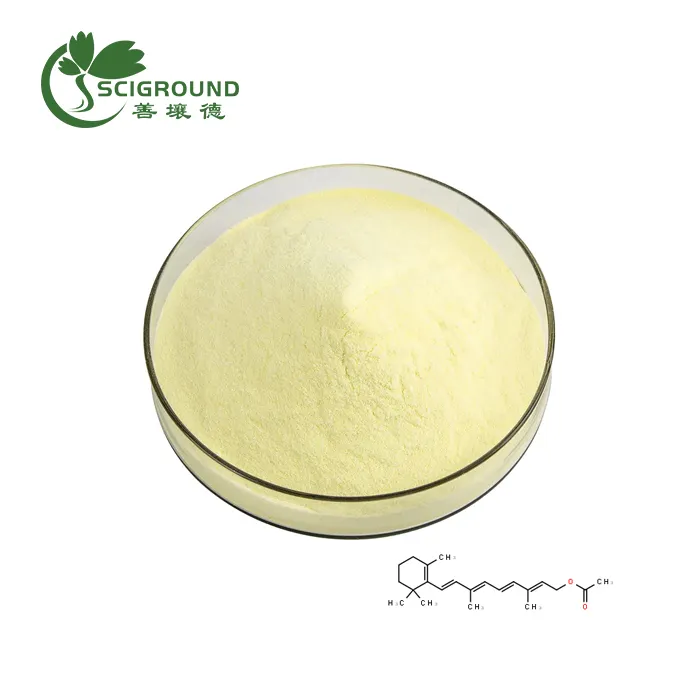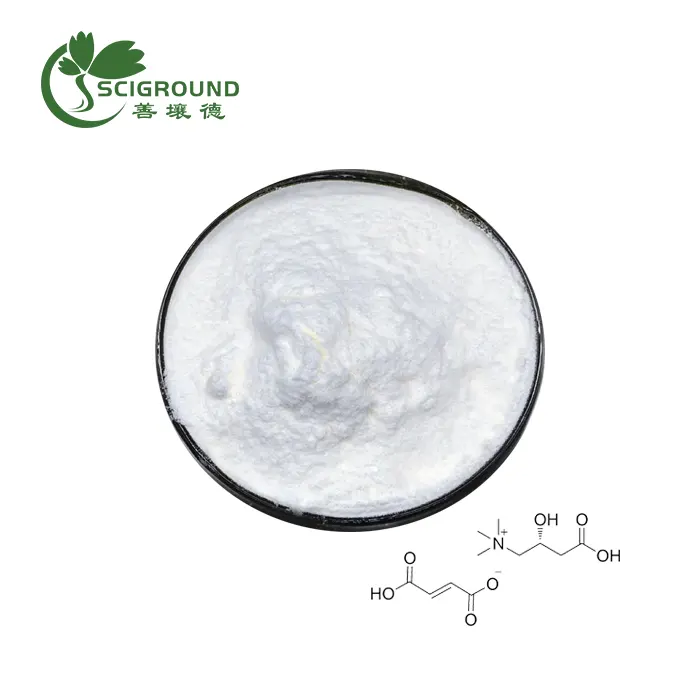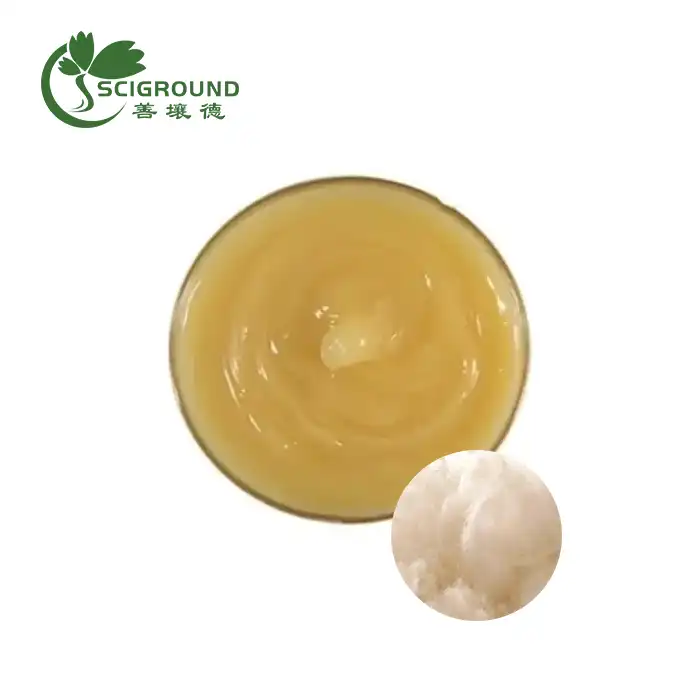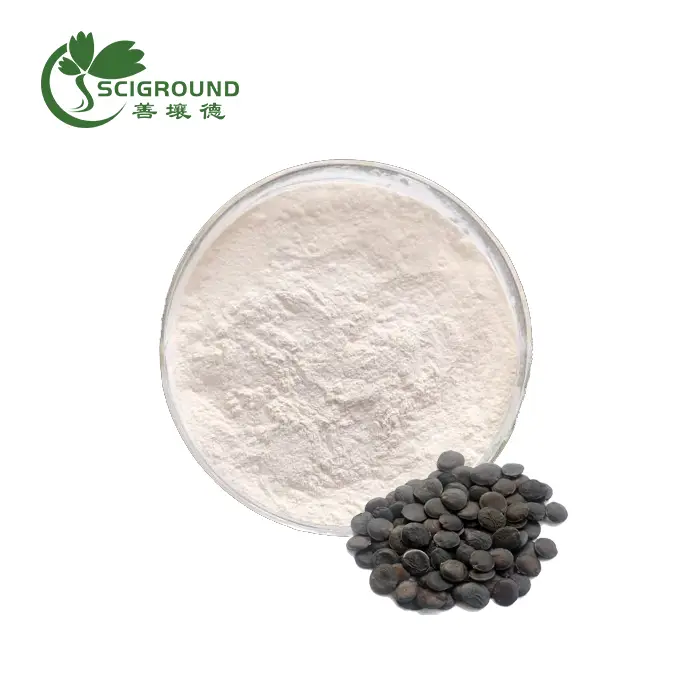Is aescin safe?
Aescin, a natural compound found in horse chestnut extract, has gained attention for its potential health benefits. However, as with any supplement or medication, it's crucial to understand its safety profile before incorporating it into your routine. In this comprehensive guide, we'll explore the safety of aescin, its sources, and extraction methods, providing you with the information you need to make an informed decision about its use.
Aescin, also known as escin, is a mixture of saponins with anti-inflammatory, vasoconstrictor, and vasoprotective properties. It's primarily derived from the horse chestnut tree (Aesculus hippocastanum) and has been used in traditional medicine for centuries. Today, aescin is available in various forms, including powders, gels, and supplements.
Where is aescin found?
Aescin is predominantly found in the seeds of the horse chestnut tree. This majestic tree, native to the Balkan Peninsula, has been cultivated across Europe and North America for its ornamental value and medicinal properties. The seeds, also known as conkers, contain the highest concentration of aescin.
While horse chestnut is the primary source of aescin, it's worth noting that small amounts of similar compounds can be found in other plants. Some related species in the Aesculus genus, such as the Ohio buckeye (Aesculus glabra) and the California buckeye (Aesculus californica), also contain aescin-like saponins, albeit in lower concentrations.
It's crucial to distinguish between the edible sweet chestnut (Castanea sativa) and the inedible horse chestnut. While both trees produce nuts, only the sweet chestnut is safe for direct consumption. Horse chestnuts contain toxic compounds that make them unsuitable for eating raw. The aescin used in supplements and medications is carefully extracted and processed to ensure safety.
What foods contain aescin?
While aescin is not commonly found in everyday foods, certain plants and their derivatives contain saponins similar to aescin. These compounds share some structural and functional similarities with aescin, although their specific effects may vary. Here are some foods that contain saponins related to aescin:
- Peanuts: These popular legumes contain saponins that contribute to their health benefits.
- Spinach: This leafy green vegetable is rich in various saponins, which may contribute to its anti-inflammatory properties.
- Tomatoes: The skin of tomatoes contains saponins that may have beneficial effects on cholesterol levels.
- Tea: Both green and black teas contain saponins, which may contribute to their antioxidant properties.
- Quinoa: This pseudo-grain is known for its high saponin content, which gives it a slightly bitter taste when unrinsed.
- Soybeans: These legumes are rich in saponins, which may contribute to their potential health benefits.
While these foods contain saponins, it's important to note that they do not contain aescin specifically. The aescin used in supplements and medications is primarily derived from horse chestnut seeds through specialized extraction processes.
Incorporating these saponin-rich foods into your diet may provide some health benefits, but they should not be considered a substitute for aescin supplements if prescribed by a healthcare professional. Always consult with a qualified healthcare provider before making significant changes to your diet or supplement regimen.
How do you extract aescin?
The extraction of aescin from horse chestnut seeds is a complex process that requires specialized equipment and expertise. While the exact methods may vary depending on the manufacturer, here's a general overview of the aescin extraction process:
- Seed Preparation: Horse chestnut seeds are harvested, cleaned, and dried thoroughly.
- Grinding: The dried seeds are ground into a fine powder to increase the surface area for extraction.
- Solvent Extraction: The ground seeds are mixed with a solvent, typically a combination of water and ethyl or methyl alcohol. This mixture is agitated to facilitate the extraction of aescin and other compounds.
- Filtration: The liquid extract is separated from the solid plant material through filtration.
- Solvent Removal: The organic solvent is carefully removed, leaving behind an aqueous solution.
- Fractionation: The aqueous solution is then fractionated using butanol or isopropanol saturated with water. This step helps to separate aescin from other compounds.
- Base Treatment: The organic layer containing aescin is treated with a base in a separating funnel, which helps to purify the extract further.
- Washing: The base-treated organic layer is washed with water saturated with butanol to remove impurities.
- Alumina Filtration: The washed organic layer is passed through acidic alumina, which acts as an adsorbent to remove remaining impurities.
- Distillation: Finally, the purified organic layer is distilled to yield aescin as a white amorphous powder.
This multi-step process ensures that the extracted aescin is of high purity and suitable for use in supplements and medications. It's important to note that this extraction should only be performed by trained professionals in a controlled laboratory environment. Attempting to extract aescin at home can be dangerous and is not recommended.
The quality and safety of aescin products largely depend on the extraction and purification methods used. Reputable manufacturers like Shaanxi SCIGROUND employ advanced techniques and rigorous quality control measures to ensure the purity and potency of their aescin extracts.
Is aescin safe for consumption?
The safety of aescin has been the subject of numerous studies, and when used as directed, it's generally considered safe for most people. However, like any bioactive compound, aescin can have side effects and may not be suitable for everyone.
Here are some key points to consider regarding the safety of aescin:
- General Safety Profile: Clinical studies have shown that aescin, particularly β-aescin, is safe and effective for short-term use in treating chronic venous insufficiency. Some research suggests it may be as effective as compression stockings in managing this condition.
- Common Side Effects: Most people tolerate aescin well, but some may experience mild gastrointestinal disturbances such as nausea, diarrhea, or abdominal discomfort. These symptoms often subside with continued use or dose adjustments.
- Allergic Reactions: In rare cases, some individuals may experience allergic reactions to aescin or other components of horse chestnut extract. Symptoms can include rash, itching, swelling, or difficulty breathing. If you experience any of these symptoms, seek immediate medical attention.
- Contraindications: Aescin should be avoided by individuals with known hypersensitivity to horse chestnut extracts. People with kidney or liver disorders should use aescin with caution, as these conditions may affect its metabolism and excretion.
- Pregnancy and Breastfeeding: Due to limited safety data, it's advisable to avoid aescin during pregnancy and breastfeeding unless specifically prescribed by a healthcare provider.
- Drug Interactions: Aescin may interact with certain medications, including blood thinners and diabetes medications. Always inform your healthcare provider about all supplements and medications you're taking.
It's important to note that while aescin is found in horse chestnut seeds, consuming raw or unprocessed horse chestnuts can be dangerous due to the presence of toxic compounds. Aescin supplements and medications are carefully prepared to ensure safety and efficacy.
Potential benefits of aescin
While safety is paramount, it's also worth considering the potential benefits that have made aescin a subject of interest in the medical community:
- Vascular Health: Aescin has shown promise in improving circulation and reducing swelling, particularly in cases of chronic venous insufficiency.
- Anti-inflammatory Properties: The compound exhibits anti-inflammatory effects, which may be beneficial in various health conditions.
- Edema Reduction: Aescin has been studied for its potential to reduce edema (fluid retention) in various parts of the body.
- Sports Recovery: Some athletes use aescin-containing products to help with recovery after intense physical activity.
While these potential benefits are promising, it's crucial to approach aescin use with a balanced perspective. More high-quality research is needed to fully understand its effects and optimal usage.
Conclusion: Balancing benefits and precautions
Aescin, when used appropriately and under the guidance of a healthcare professional, can be a safe and potentially beneficial compound. Its anti-inflammatory and vascular-protective properties make it an intriguing option for those dealing with certain health issues, particularly related to circulation.
However, like any bioactive substance, aescin is not without risks. The key to safe use lies in proper dosing, quality sourcing, and individual health considerations. Always consult with a qualified healthcare provider before starting any new supplement regimen, especially if you have pre-existing health conditions or are taking other medications.
By understanding both the benefits and precautions associated with aescin, you can make an informed decision about whether it's right for you. Remember, what works for one person may not be suitable for another, and personalized medical advice is always the best approach to health and wellness.
If you're considering incorporating aescin into your health routine, look for high-quality products from reputable manufacturers like Shaanxi SCIGROUND. Our commitment to quality, purity, and safety ensures that you're getting the best possible aescin products.
References
- Sirtori, C. R. (2001). Aescin: pharmacology, pharmacokinetics and therapeutic profile. Pharmacological Research, 44(3), 183-193.
- Pittler, M. H., & Ernst, E. (2012). Horse chestnut seed extract for chronic venous insufficiency. Cochrane Database of Systematic Reviews, (11).
- Masaki, H., et al. (1995). Active-oxygen scavenging activity of plant extracts. Biological and Pharmaceutical Bulletin, 18(1), 162-166.
- Wetzel, D., et al. (2002). Aescin-induced muscle relaxation and potentiation of neuromuscular blockade are mediated by different mechanisms. British Journal of Pharmacology, 137(7), 1167-1174.
- Guillaume, M., & Padioleau, F. (1994). Veinotonic effect, vascular protection, antiinflammatory and free radical scavenging properties of horse chestnut extract. Arzneimittel-Forschung, 44(1), 25-35.
- Wilkinson, J. A., & Brown, A. M. G. (1999). Horse chestnut – Aesculus hippocastanum: potential applications in cosmetic skin-care products. International Journal of Cosmetic Science, 21(6), 437-447.
For more information about our high-quality Aescin Powder and other plant extract products, please don't hesitate to contact us at info@scigroundbio.com. Our team of experts is ready to answer your questions and help you find the right solutions for your needs.
Related Industry Knowledge
- What is Cordyceps Mushroom?
- Which is better milk thistle or artichoke extract?
- What are the benefits of aloe vera?
- Is hydrolyzed wheat protein the same as gluten?
- What does white kidney beans do for skin?
- How Long Does Inulin Stay in Your System
- What are natural sources of DHM?
- What is resveratrol used for
- OPC Grape Extract Powder: A Comprehensive Guide
- Stephania extract: Benefits, Dosage, and Purchasing Information
